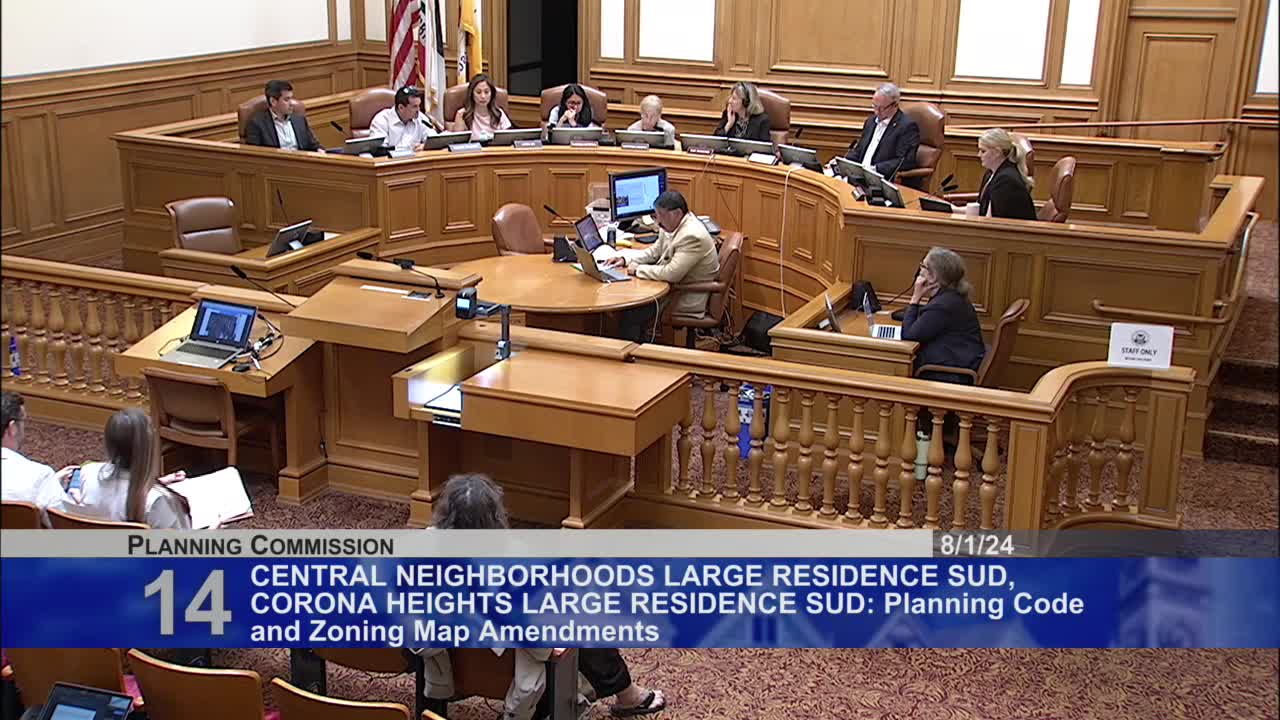Debate intensifies over housing size and affordability
August 01, 2024 | San Francisco County, California

This article was created by AI summarizing key points discussed. AI makes mistakes, so for full details and context, please refer to the video of the full meeting. Please report any errors so we can fix them. Report an error »

In a recent government meeting, officials engaged in a heated discussion regarding housing equity and the impact of large single-family homes on local communities. The dialogue centered around a proposal aimed at limiting the size of new homes to 3,000 square feet, a measure intended to address the growing affordability crisis in the area.
Several commissioners expressed support for recommendations one and three of the proposal, which focus on maintaining reasonable home sizes while allowing for some flexibility. They emphasized the need to combat the trend of \"monster homes\" that contribute to rising housing costs, making it increasingly difficult for middle-class families to afford living in the community. One commissioner highlighted the urgency of the situation, noting that families are leaving due to financial pressures, and stressed the importance of creating more accessible housing options.
However, there was significant debate over recommendation two, which some commissioners opposed, fearing it could lead to the construction of larger homes under the guise of accessory dwelling units (ADUs). Concerns were raised about the potential for these units to be misused, transforming into oversized residences rather than serving their intended purpose of providing affordable housing.
The discussion also touched on the need for innovative approaches to increase housing density without compromising livability. One commissioner referenced successful strategies observed in Europe, advocating for smaller, more efficient living spaces that could accommodate more residents while utilizing existing infrastructure effectively.
Ultimately, a motion was passed to support recommendations one and three, with a narrow vote of four to three. This decision reflects a commitment to addressing housing equity while navigating the complexities of local development regulations. The meeting underscored the ongoing challenges faced by communities grappling with housing affordability and the need for thoughtful policy solutions.
Several commissioners expressed support for recommendations one and three of the proposal, which focus on maintaining reasonable home sizes while allowing for some flexibility. They emphasized the need to combat the trend of \"monster homes\" that contribute to rising housing costs, making it increasingly difficult for middle-class families to afford living in the community. One commissioner highlighted the urgency of the situation, noting that families are leaving due to financial pressures, and stressed the importance of creating more accessible housing options.
However, there was significant debate over recommendation two, which some commissioners opposed, fearing it could lead to the construction of larger homes under the guise of accessory dwelling units (ADUs). Concerns were raised about the potential for these units to be misused, transforming into oversized residences rather than serving their intended purpose of providing affordable housing.
The discussion also touched on the need for innovative approaches to increase housing density without compromising livability. One commissioner referenced successful strategies observed in Europe, advocating for smaller, more efficient living spaces that could accommodate more residents while utilizing existing infrastructure effectively.
Ultimately, a motion was passed to support recommendations one and three, with a narrow vote of four to three. This decision reflects a commitment to addressing housing equity while navigating the complexities of local development regulations. The meeting underscored the ongoing challenges faced by communities grappling with housing affordability and the need for thoughtful policy solutions.
View full meeting
This article is based on a recent meeting—watch the full video and explore the complete transcript for deeper insights into the discussion.
View full meeting
